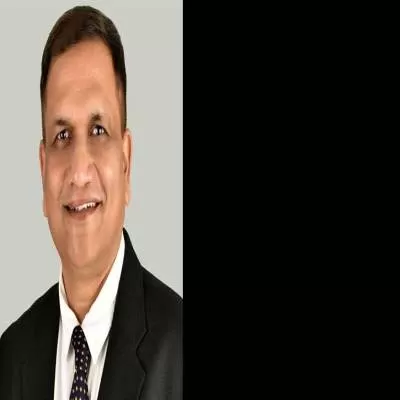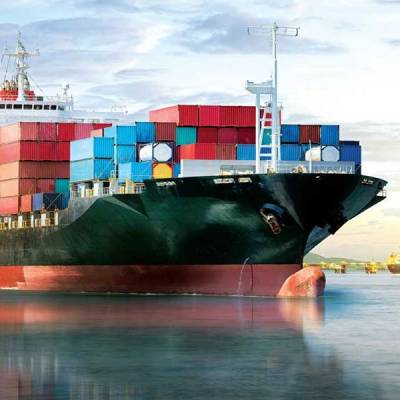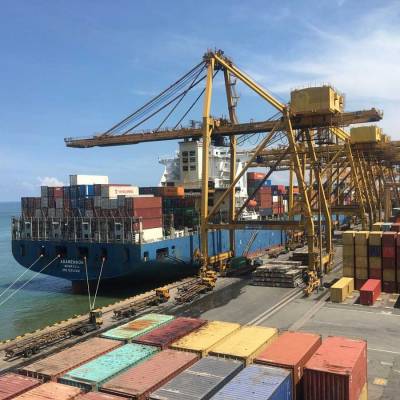- Home
- Infrastructure Transport
- PORTS & SHIPPING
- Chequered flag
Chequered flag
The Indian F1 circuit was hailed by no less than Michael Schumacher as one that met every international benchmark. So, full marks to Jaypee Group for managing issues of land acquisition and construction in time, then handling a 95,000-strong crowd, and setting the stage for this $400 million investment to enhance the values of its land bank (according
to the plans of Jaypee Sports City, it measures 2,500 acre). This is definitely a historical land development plan, the first stage of which has grabbed the eyeballs of the world. The plan to connect Noida to Agra over a six-lane (extendable to eight lane), 165 km expressway includes an ICC cricket stadium and several other mega sports facilities spread across 875 acre, apart from the F1 race track. Further, 13 service roads with a total length of 168 km will be constructed concurrently with the expressway, including areas with parking, shelters and toilets; roadside facilities with fuel stations and coffee shops; restaurants and motels. To cover the cost of the F1 track, Jaypee Group needs Sports City to raise its property rates by Rs 2,000 per sq ft only - that is if one were to recover all costs from this project alone.
It is interesting to note that the task of land acquisition - touted as the number one enemy of infrastructure - was handled by laws in Uttar Pradesh as follows:
- Infrastructure projects such as highways and canals will be based on the karar niyamavali (mutual agreement) process .
- Planned development will be based on the karar niyamavali process.
- Commercial projects led by private developers will require developers to obtain prior consent of 70 per cent of the affected farmers before the project can be reviewed by the state. The private developer will be required to give 16 per cent of the developed land back to the farmers.
- An annuity for 33 years of Rs 23,000 per acre ($510 per acre every year), plus an increase of Rs 800 per acre every year; or,
- A lump-sum upfront payment of Rs 276,000 per acre ($6,100 per acre)
It is obvious that politics has hijacked development to further its own interest. Those who play with politicians sometimes suffer when their adversaries are in power; some others who command strong brand equity can also twist the arm of the government into adhering to business ethics; but for the rest, foreign investors included, the dice is loaded. If the private sector, including foreign investors, is to contribute to the kitty of $1 trillion for infrastructure investment, these rules are hardly likely to cut any ice.
The voice of people like Azim Premji, who has bemoaned inaction, found echo at the 9th Construction World Annual Awards as Dr Shashi Tharoor, Justice Santosh Hegde and Dr Indu Shahani exhorted captains of the industry to build a strong nation with ethics, morality and a human touch. Read on. And we hope to see you at EXCON from November 23-27, 2011 in Bengaluru - you'll find us at Stall Number 648, Hall 3, Lower Level.
As Sachin Tendulkar waved the chequered pennant, flagging off India's arrival on the global map of Formula One racing, one could not but help see the symbolism: the success of private enterprise over the chequered reforms process that has now ground to a halt.The Indian F1 circuit was hailed by no less than Michael Schumacher as one that met every international benchmark. So, full marks to Jaypee Group for managing issues of land acquisition and construction in time, then handling a 95,000-strong crowd, and setting the stage for this $400 million investment to enhance the values of its land bank (according to the plans of Jaypee Sports City, it measures 2,500 acre). This is definitely a historical land development plan, the first stage of which has grabbed the eyeballs of the world. The plan to connect Noida to Agra over a six-lane (extendable to eight lane), 165 km expressway includes an ICC cricket stadium and several other mega sports facilities spread across 875 acre, apart from the F1 race track. Further, 13 service roads with a total length of 168 km will be constructed concurrently with the expressway, including areas with parking, shelters and toilets; roadside facilities with fuel stations and coffee shops; restaurants and motels. To cover the cost of the F1 track, Jaypee Group needs Sports City to raise its property rates by Rs 2,000 per sq ft only - that is if one were to recover all costs from this project alone.It is interesting to note that the task of land acquisition - touted as the number one enemy of infrastructure - was handled by laws in Uttar Pradesh as follows:Infrastructure projects such as highways and canals will be based on the karar niyamavali (mutual agreement) process . Planned development will be based on the karar niyamavali process. Commercial projects led by private developers will require developers to obtain prior consent of 70 per cent of the affected farmers before the project can be reviewed by the state. The private developer will be required to give 16 per cent of the developed land back to the farmers.The land acquisition policy announced in June 2011 by the Uttar Pradesh government provides the following compensation to farmers from whom land is being acquired:An annuity for 33 years of Rs 23,000 per acre ($510 per acre every year), plus an increase of Rs 800 per acre every year; or, A lump-sum upfront payment of Rs 276,000 per acre ($6,100 per acre) Then, why are our power projects (non-nuclear) languishing? Why can't Lavasa pay a penalty, adhere to norms and move on? And more important, why don't we have clear guidelines on environment that an investor can get his appointed architects, contractors and engineers to adhere to, before investing?It is obvious that politics has hijacked development to further its own interest. Those who play with politicians sometimes suffer when their adversaries are in power; some others who command strong brand equity can also twist the arm of the government into adhering to business ethics; but for the rest, foreign investors included, the dice is loaded. If the private sector, including foreign investors, is to contribute to the kitty of $1 trillion for infrastructure investment, these rules are hardly likely to cut any ice.The voice of people like Azim Premji, who has bemoaned inaction, found echo at the 9th Construction World Annual Awards as Dr Shashi Tharoor, Justice Santosh Hegde and Dr Indu Shahani exhorted captains of the industry to build a strong nation with ethics, morality and a human touch. Read on. And we hope to see you at EXCON from November 23-27, 2011 in Bengaluru - you'll find us at Stall Number 648, Hall 3, Lower Level.




















